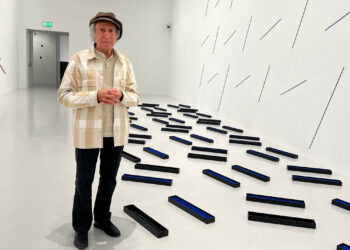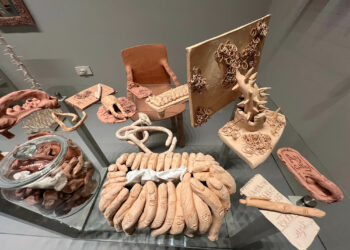In 2021, at the Nirox Foundation – located at ‘The Cradle of Humankind’ in South Africa – we see the manifestation of a global counter-intuitive project. Pitted against perversity, in search of tomorrow’s health today, the project brings together artists from South Korea, Morocco, and South Africa, in a joint attempt to confound the bitterness latent in a reactionary desire to destroy compassion, arrest human movement, and defy growth.
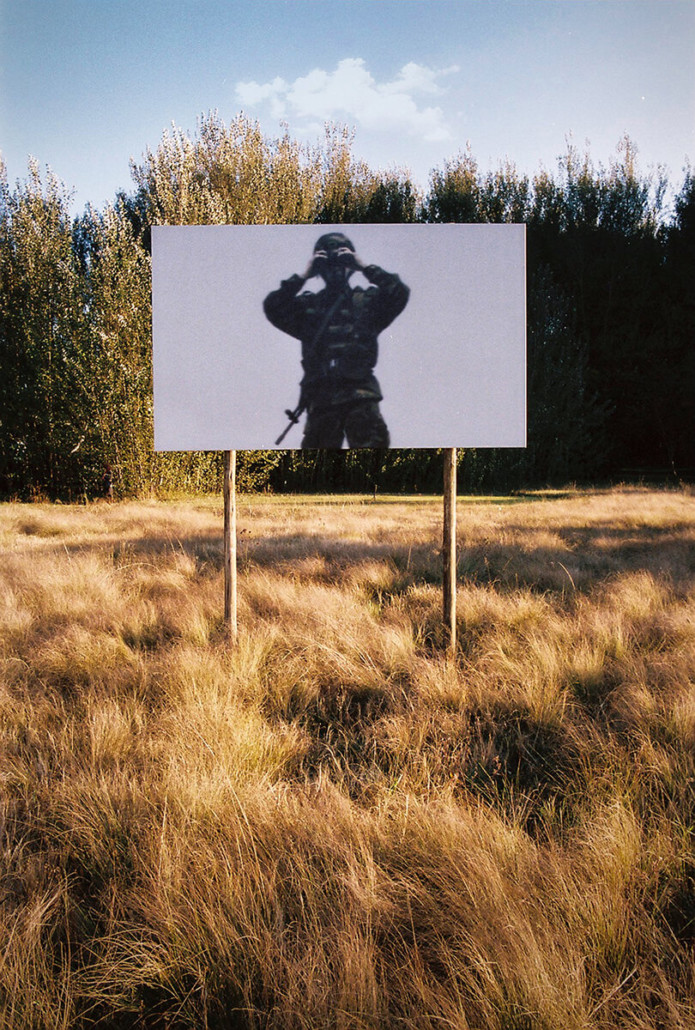
Seung Woo Back, My life in war, 2010 to 2018. Photographer: Dan Roberts
Titled ‘Margins of Error’, the mixed media exhibition, comprising sculpture, performance, painting, digital art and horticulture, asks us to rethink the devastating consequences of exclusionary policies and practice. A margin of error is designed to absorb a shortfall or contradiction in the event of a miscalculation or change in circumstance. Conceptually and practically flexible, it supposes the great likelihood that mistakes occur. As a principle, a margin of error is democratic, despite the cynicism that is also fixed to it. However, what a margin of error constitutively acknowledges is that life – politics, economics, art – is variable. There are no absolute guarantees, there is only infinite possibility, whether good or ill, which can as easily transform hell into heaven, heaven into hell.
The megaphonic shouting match back and forth between North Korean dogma and South Korean K-pop… may be absurd, but the threat of nuclear destruction is not.
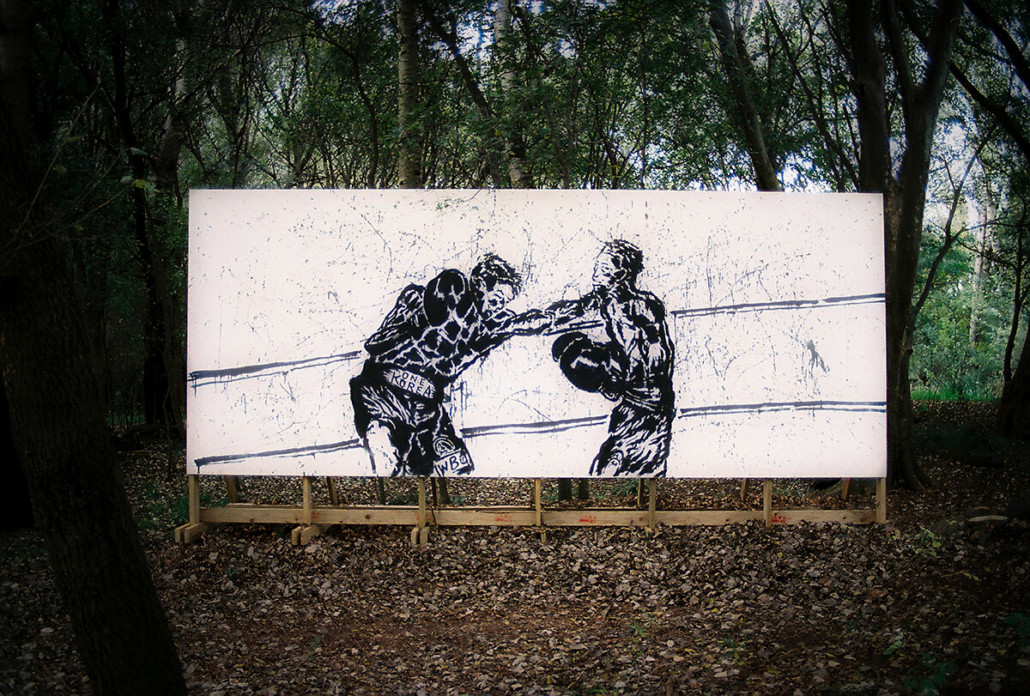
Daejin Choi, Last Chance, 2021. Photographer: Dan Roberts
If John Milton’s wager persists, it is because we live in a time of radical uncertainty. Fear and dread reign, but so does hope. The megaphonic shouting match back and forth between North Korean dogma and South Korean K-pop – a dogma of another kind – may be absurd, but the threat of nuclear destruction is not. Worldwide, extremes vary, but nowhere are they legitimate. Sontag’s ‘idea of Europe’ shaped by involution and ‘retrenchment’ is a withering prediction – a margin of error that errs on the dark side. But what must now be considered is Forster’s belief in ‘human love’ – the ways in which artists from South Korea, Morocco, and South Africa have come together to realign perverted divisions. As Seung Woo Back, a member of ‘The Real DMZ’, notes, ‘People born and raised in Korea have been educated under the pretext of ideology and justice. They are educated and brainwashed into certain opinions, rather than judging for themselves. I likewise do not want to judge what is right and wrong, no can I’. The artist’s stance is vital. What it advocates is openness, connection, understanding, and, all-importantly, a critically reflexive individuality. Daejin Choi’s painting, while more immediate in its dream of unification – the North Korean boxer, Hong, wears a waistband that read’s ONE KOREA – also believes that this dream must be expressed singularly. In the work of both artists, Forster’s core belief in human connection is central. But as Chung Soyoung cannily understands, no aspiration is achievable without acknowledging the ‘indeterminacy and transmutability of space’.
Geographies, whether psychic or physical, are imagined flows of possibility, as much as they can be stunted negations, or reactionary protestations. Ham Kyungah’s mutable border wall reaffirms this variability, flow, and openness. 27 interconnected translucent lines reflect the number of changes, or margins of error, along the North-South border. Against an imagined absolute, each artist reaffirms the indeterminate ‘transmutability of space’. This changeling vision is perhaps most delicately expressed in Hye Ryeong Cho and Kyung Jin Zoh’s garden, Mine Flower. Inspired by a poem by Chunggeun Chung, it exposes the ‘spatial tension’ and ‘situational irony’ which the DMZ represents. As David G. Havlick notes in Bombs Away, it is ‘one of the most dangerous places on earth for humans, and paradoxically one of the safest for wildlife’.
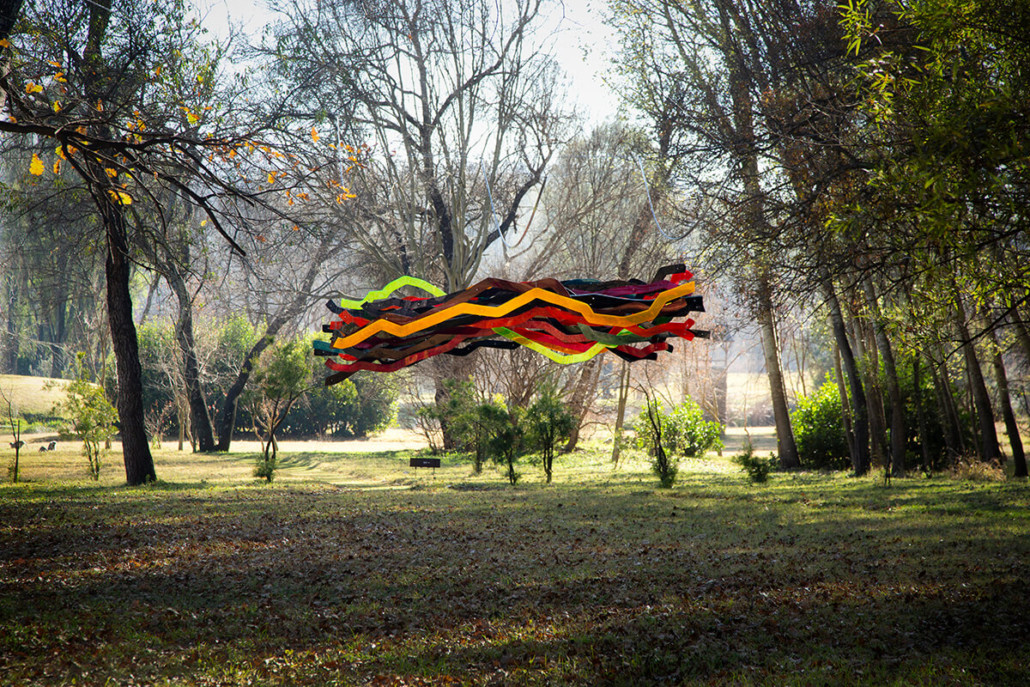
© Ham Kyungah
Whether ecological, psychological, or physical, ‘The Real DMZ’ is a creative wager in the midst of a catastrophic error – the longest running conflict, along an unethical border, in modern history. As Thomas Barrie notes in an essay in GQ, North and South Korea ‘signed an armistice but no perpetual peace treaty in 1953’. We are now in the 69th year of ‘the world’s longest ceasefire’. Heightened uncertainty in the midst of an arrested and suspended state is unsurprising. But neither are the many creative initiatives generated by ‘The Real DMZ’ since 2012. A movement started by Sunyung Kim, it is as spectral as it is palpable, as much a projected dream as it is ‘real’. This, of course, is art’s purpose – it performs and transforms difference, inhabits the paradox: landmine/flower.
If isolation amounts to ignorance, connection amounts to wisdom.
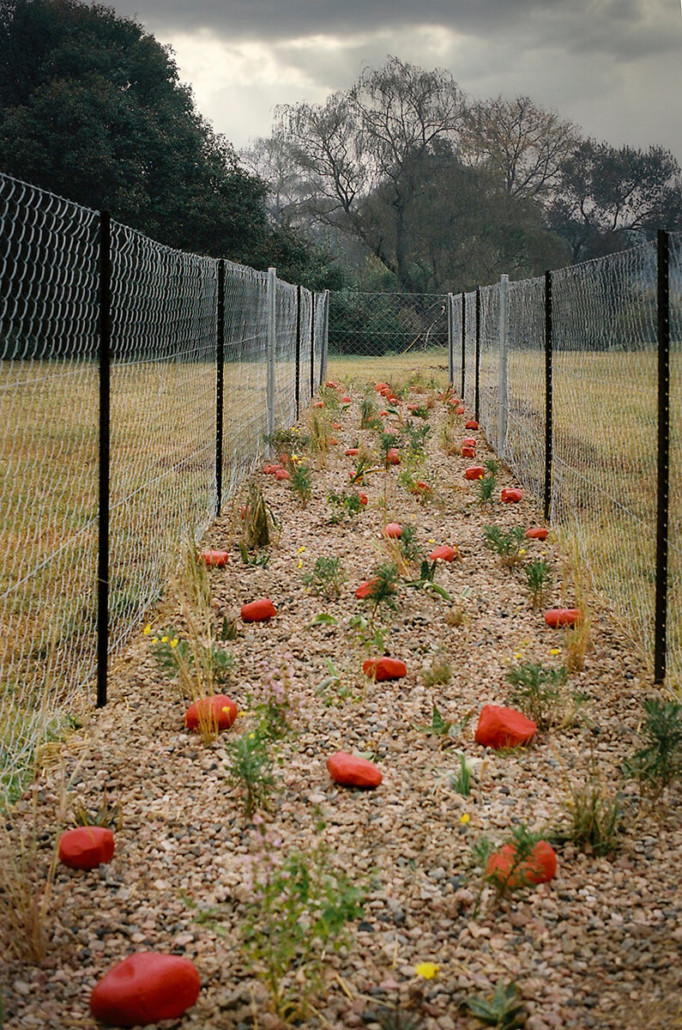
Hye Ryeong Cho & Kyung Jin Zoh, Mine Flower, 2012. Photographer: Nicholai Thomas
It is fitting that ‘The Real DMZ’ should collaborate with Nirox. What connects their respective visions is the desire to work against pitiless sorrow and falsely exalted difference, on behalf of compassion and understanding. The Nirox Foundation’s decision, under the direction of Benji Liebmann, to connect artists from South Korea, Morocco, and South Africa, signals a profound triangulation and a global reconciliatory push. If isolation amounts to ignorance, connection amounts to wisdom. Most of all, for Forster, it allows for ‘the prose and the passion’ – the ordinarily normative and the psychically and emotionally innovative, in brief, the new world of art. The project, therefore, is nothing less than an exaltation, a refusal of life lived in fragments, an embrace of ‘human love’. That we urgently require creative expressions of this kind is unsurprising given the world’s woeful regression. We in South Africa, still struggling to overturn a colonial and apartheid legacy, well know that walls never work. Exclusionary cults ascribe to a death instinct. As the American poet, Robert Frost, famously reminded us in his poem, Mending Wall, good fences make good neighbours. President Kim Dae-Jung’s ‘Sunshine Policy’, and President Moon Jae-in’s resuscitation thereof, is the embodiment of this principle. While, in practice, it may be failing, its vision is unimpeachable.
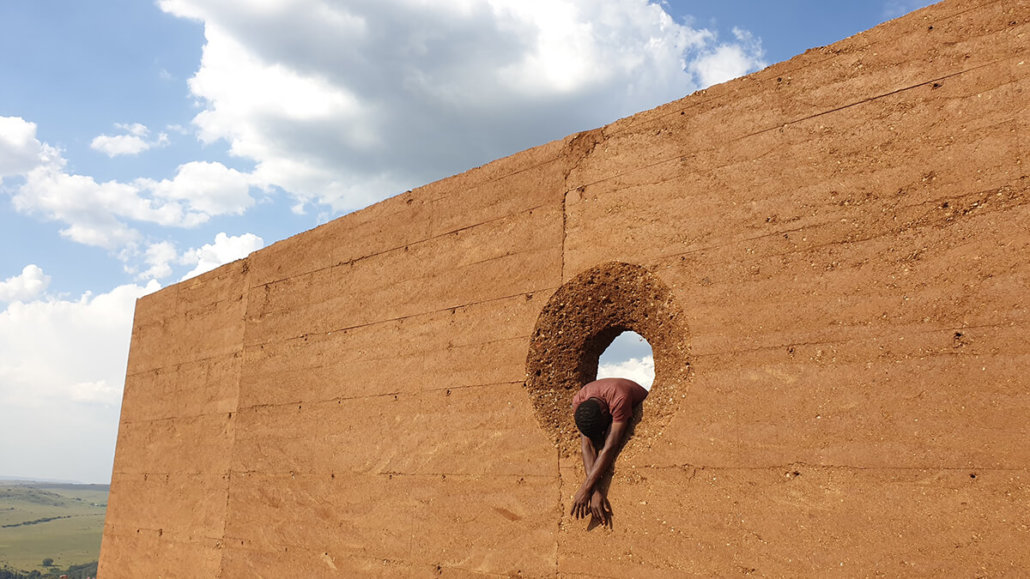
© Amine El Gotaibi Photographer: Julia Jane Persson
The Moroccan-South African contribution to a triangulated vision further underscores my point that reconciliation is the surest way forward in this benighted time. Curated by Marta Moriaty, and titled ‘That Hidden Thread’, it further amplifies the need for all that binds us. Amine E Gotaibi’s rammed earth wall with a hole punched through it echoes Daejin Choi’s punch on behalf of ‘ONE KOREA’. Youness Atbane’s circle of abstract bowed figures signals the vital importance of a unified community. ‘The work invites an immersive holding of the reflective space’, Atbane notes, it is the embodiment of a ‘waterproofed forgiveness’ that ‘crosses all borders and seas’ – here the Korean principle of appeasement through gifting returns.
Atbane’s circular structure is rock-solid, but its greater durability is conceptual. If Gotiabi tears through divides, Atbane seeks a greater solvent. Both, however, understand the inextricable connection between individuality and community, which is also central to Ham Kyungah’s indeterminate and transmutable spaces. While abstract, the sculptural works are also visceral, as prosaic as they are passionate, and, as such, immediately grasped. The third Moroccan work by Yamou Abderrahim, a cluster of tiny A-framed stone houses, precariously pitched at a slope before a large body of water, speaks of human settlement as something intrinsically unsettling. Our home is no castle, our sense of place always provisional, the project of self-identification, while practical, always delusory. This is because the home, or nation, is a political and cultural construct, which, if it is to remain efficacious, must embrace its fragility, porous, pragmatic conditionality – and openness.
In Routes the American ethnographer, James Clifford, summarises a vision of being in situ while in movement as both an ancient and a new paradigm. ‘Cultural action, the making and remaking of identities, takes place in the contact zones, along the policed and transgressive intercultural frontiers of nations, peoples, locales’ – a conception perfectly exemplified in the DMZ project, a cultural intervention on the border between North and South Korea. Its objective is not to amplify division and difference but to inspire the realisation of everything that connects these opposed yet joined worlds. Theirs is a project that reminds us that politics, while grossly and devastatingly material, is also artificial, that ideology, when it negates humanity, is a scourge. It is against a cruelly divisive vision of the world that the DMZ project exposes a policed divide as a transgressive intercultural frontier, or margin of error, wherein one can make and remake identity and foster alternative zones of contact.
Our home is no castle, our sense of place always provisional, the project of self-identification, while practical, always delusory. This is because the home, or nation, is a political and cultural construct, which, if it is to remain efficacious, must embrace its fragility, porous, pragmatic conditionality – and openness.
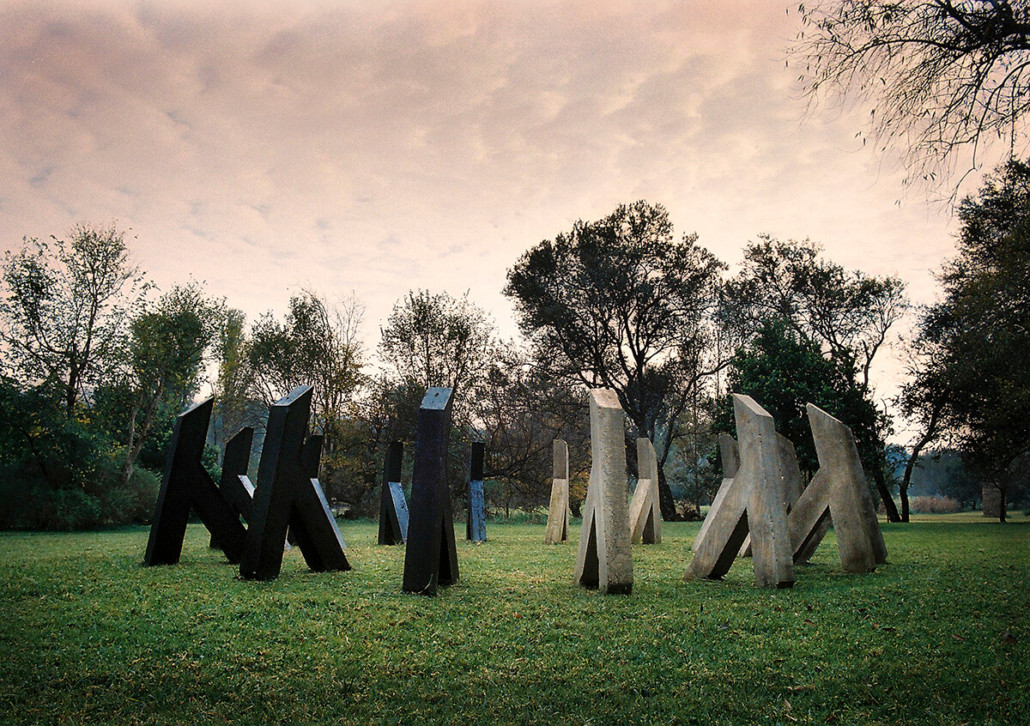
Youness Atbane, Waterproof forgiveness, 2020. Photographer: Dan Roberts
As Jessica Doucha, artist in residence and co-curator of Nirox’s trinational project, tells me, the aim is not to reify what distinguishes the artists from Morocco, South Korea, or South Africa, but to celebrate a connective tissue. Conceived independently, stalled then thrust together by COVID, ‘That Hidden Thread’ and ‘The Real DMZ’ have fortuitously been brought together. Given that there is no foreseeable end to a world driven into isolation by virtue of a plague – all the better to fan the flames of a cultural politics that is exclusionary, hateful, fearful, divisive – the Nirox Foundation has chosen to up the ante and enshrine co-dependence rather than independence. Under the new moniker, ‘Margins of Error’, it has chosen to remove a wedge, override on-going delay, and install a trinational yet singular vision which embraces parity, fellow feeling, and, most of all, hope for a better human future. It is not blithe optimism that fuels this endeavour, but an implacable belief that what connects us will triumph above all. If ‘Margins of Error’ possesses a manifest, then, after Clifford, it is one that is ‘conjunctural’ – a project distinguished by ‘encounters and translations’… ‘a politics of hybridity’… a celebration, despite policing, of innovative and life-affirming transgressions and transformations. Here, Youness Atbane’s evocative phrase – ‘Waterproofed Forgiveness’ – echoes.
‘The body has a greater intelligence than we give it credit for’, says Doucha. It is this ‘greater intelligence’ which we see in sculptures, paintings, sound and video works, ‘appearances’ and performances, which seek to transfigure the false borders we erect. Of the performative dimension of the project, Doucha speaks of a ‘channelling’, the body as a transgressive and transfiguring medium. One does not only change the world conceptually but bodily and spiritually. Things are also apparitions. Substance is also atomic. If the border between North and South Korea is aggravated, it is also ‘eerily calm’, says Doucha. The paradox is striking. And if the South African contribution can, for the purposes of this essay, be said to possess a distinct dimension, then, perhaps, it is performative – an examination of the temporal, fluid, open and healing nature of movement, the restlessness of being in a world dangerously fixated with absolutes, be they political, ideological, or physical.
One does not only change the world conceptually but bodily and spiritually. Things are also apparitions. Substance is also atomic.
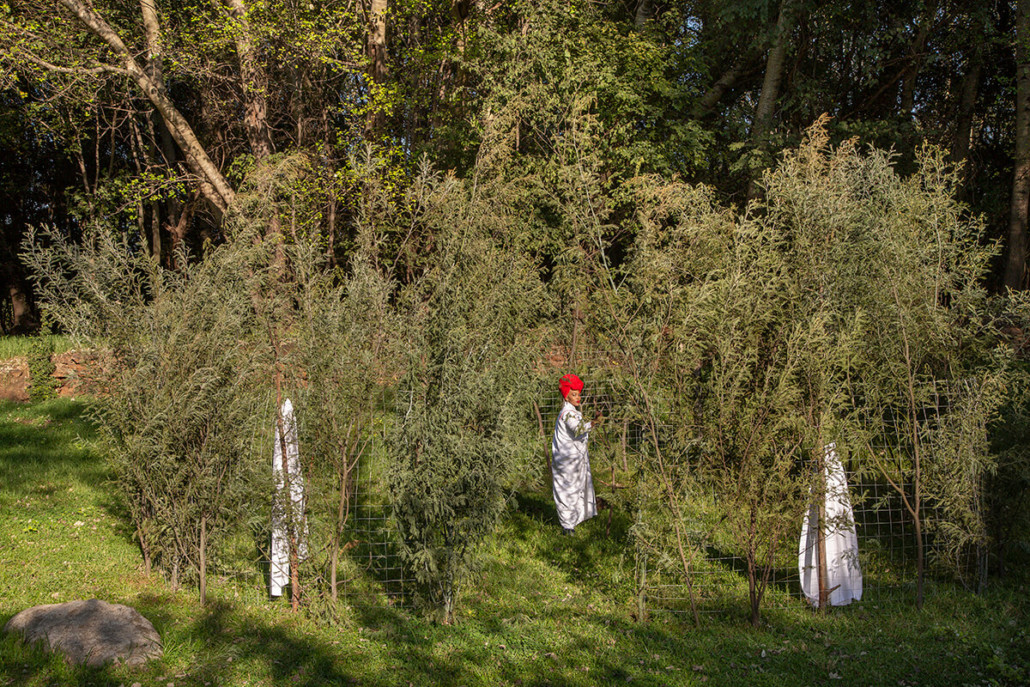
Lhola Amira, 2021. Photographer: Charmaine Noncedo
Lhola Amira’s ‘appearances’ – her apparitional performances – signal the liquidity of being, its amorphous intangibility. In a world of obsessive-compulsive fixities, be it nationhood, ideology, race, sexuality, etc, Amira asks us to embrace non-empirical yet profoundly felt connections. She abstracts and spiritualises the core impulses of the DMZ and Moroccan projects. This impulse also lies at the heart of Buhlebezwe Siwani’s desire to connect Northern and Southern Africa. This bond, however, is never absolute, which is why her work, part installation, part performance, ‘is ephemeral and exists in the way that it chooses’ – subject to erosion like Gotiabi’s gutted rammed earth wall. Mary Sibande’s installation too, while corporeal, is as fascinated by incorporeality. It is inspired by Bas Jan Ader’s final work – ‘made, or not made’, titled In search of the Miraculous – which ‘involved an attempted Atlantic Ocean crossing’ in a small boat. Discovered ten months later by a passing trawler, little else remains other than a photograph of the artist’s departure. What fascinates Sibande is the dream of a crossing, as ephemeral as it is real. Borders, after all, are psychological too. If Jan Ader failed and died in his bid, the dream still survives, as achingly material, as beautiful, as the Dorasan Station, 650 meters away from the DMZ’s southern territory – a dream as deferred as it remains achingly palpable.
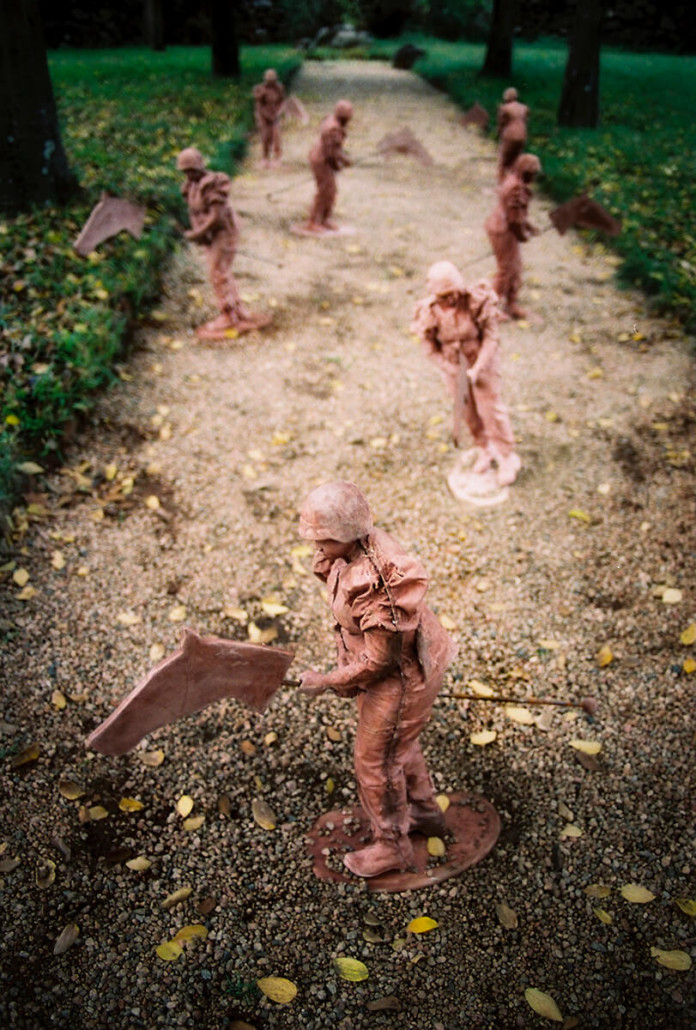
Mary Sibande, Remnants of disaster, 2021. Photographer: Charmaine Noncedo
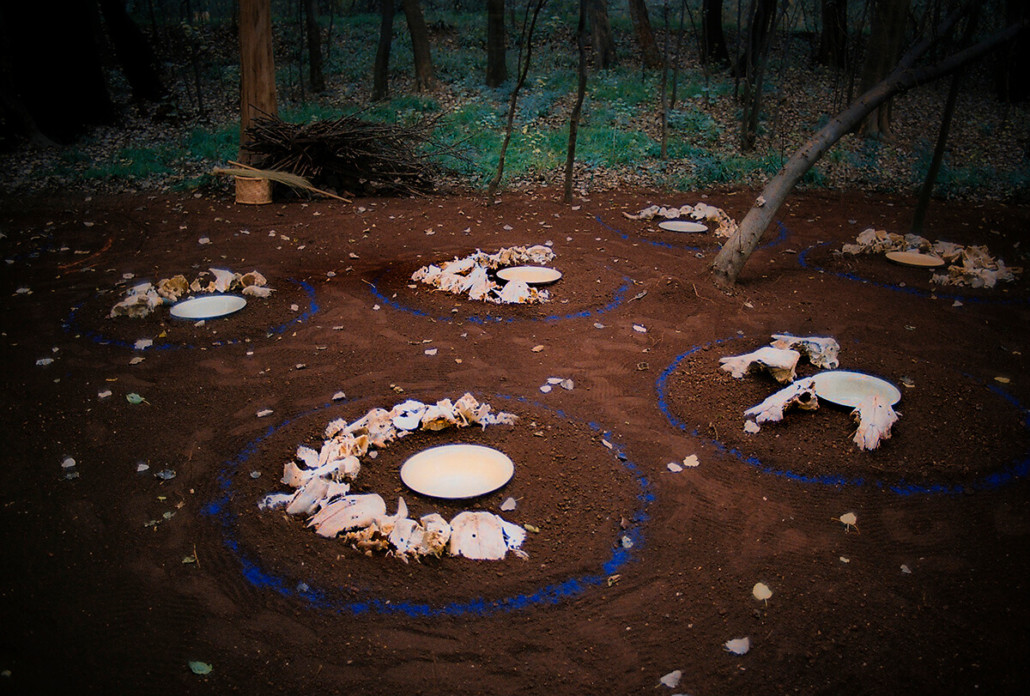
Buhlebezwe Siwani, A symphony for the children of Africa, 2021. Photographer: Dan Roberts.
In the conjunction of African animism, Europe’s pioneering spirit, and Korea’s psychologically riven ceasefire, we see a strange melding of forces and energies. Of course, much else exists that unites these worlds. In no way do I wish to simplify human complexity, or cultural difference. As Sethembile Msezane justly notes, ‘Those with gifts from the ancestors are called to serve to remember, to acknowledge, heal and celebrate life in the spiritual world that deeply affects the physical realm’. One ignores this synergy at one’s own peril. If the trinational endeavour connecting artists from South Korea, Morocco, and South Africa is exemplary, it is because it strives to connect the material and spiritual realms, find concord in seemingly non-aligned worlds.
The art we make, and the stories they carry, are lessons in a rich transactional history.
For Michele Mathison, ‘An ancient hidden thread that runs through Africa is the conus shell spiral’. Used in trade exchanges – ‘a symbol of wealth, power, strength and spirituality… an ancient symbol of culture and identity’ – its return, as sculptural freight, stands as a reminder that loss and pain cannot he healed without connection. In many ways, Mathison’s sculpture echoes Youness Atbane’s stone circle of bowed mutually forgiving figures. As do Chris Soal’s monoliths, bitten, corroded as though devoured from within, scored with the traces of atavistic time, yet durable nonetheless. Inspired by Max Ernst’s work, Europe after the Rain, it also echoes the acidity of Susan Sontag’s vision of the death of empire, the narrowing of vision, the stunting of hope, and yet, despite all corrosion from within, the overarching belief that ruin is momentary, healing eternal.
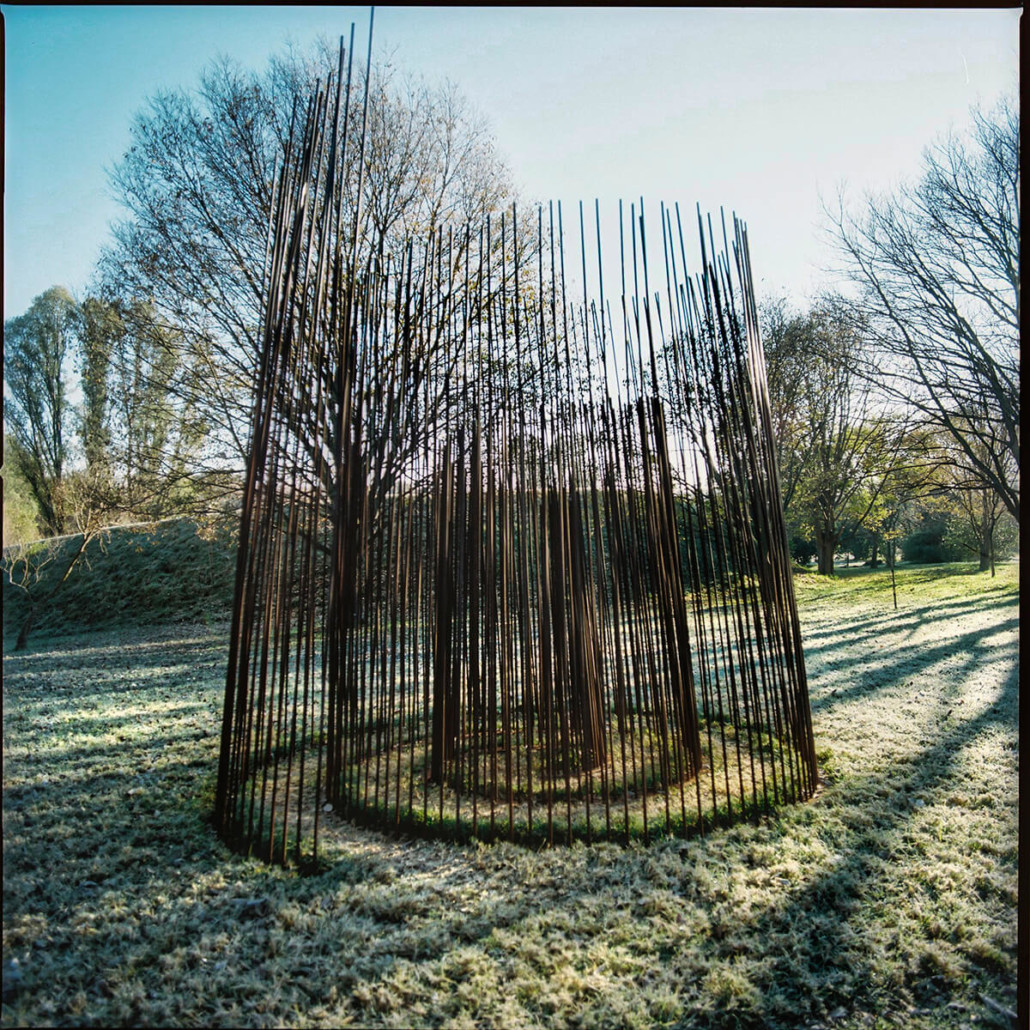
Michele Mathison, Ndoro, 2021. Photographer: Dan Roberts
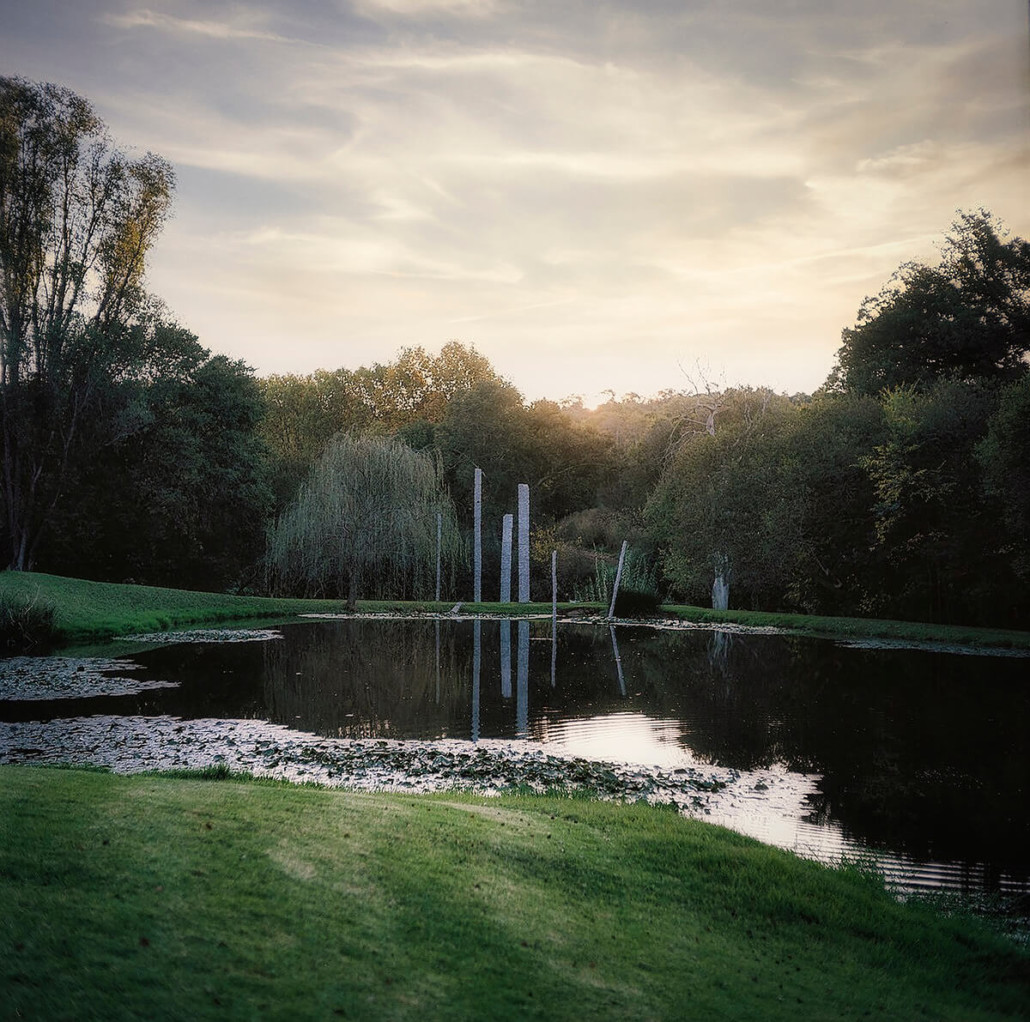
Chris Soal, Relic, 2019-2021. Photographer: Dan Roberts
Each and every elected division inhabits error. If Clifford’s vision of policed-yet-transgressive borders is profoundly salient it is because, at its best, it enjoins empathy and inspires everything that connects rather than divides us. This, surely, is the way forward. The art we make, and the stories they carry, are lessons in a rich transactional history. It is because we have always been on the move, always caught in fluid zones – ever since we ventured from Africa’s ‘cradle of humankind’ – that we are, in truth, more attuned to difference than to sameness. Clifford could not perhaps have predicted the new world order threatening us, of isolationism-nationalism-fascism, though he was certainly aware of the immense productivity of ‘contact zones’, and that the global policing of cultural and political difference today, along with the manufacture of a regressive interiority and provincialism, cannot override the greater drive towards a hybrid inclusivity. In this key regard, ‘Margins of Error’ – with its concert of arts from the Arab-African, South African, and South Korean worlds – is an enduring riposte. Localised yet diffuse. Knowing yet mysterious. Corporeal yet incorporeal. A singular yet collective act of protest, divination, and love that reminds us, after Sunyung Kim, that while ‘invisible’, corrosive, and annihilating ‘spectres’ prevail, while borders carry immeasurable and devastating psychological and ethical consequences, they cannot deny our fundamental right to… Only Connect!
Ashraf Jamal is a Research Associate in the Visual Identities in Art and Design Research Centre, University of Johannesburg. He is the co-author of Art in South Africa: The Future Present and co-editor of Indian Ocean Studies: Social, Cultural, and Political Perspectives. Ashraf Jamal is also the author of Predicaments of culture in South Africa, Love themes for the wilderness, The Shades, In the World: Essays on Contemporary South African Art, and Strange Cargo: Essays on Art (forthcoming).
